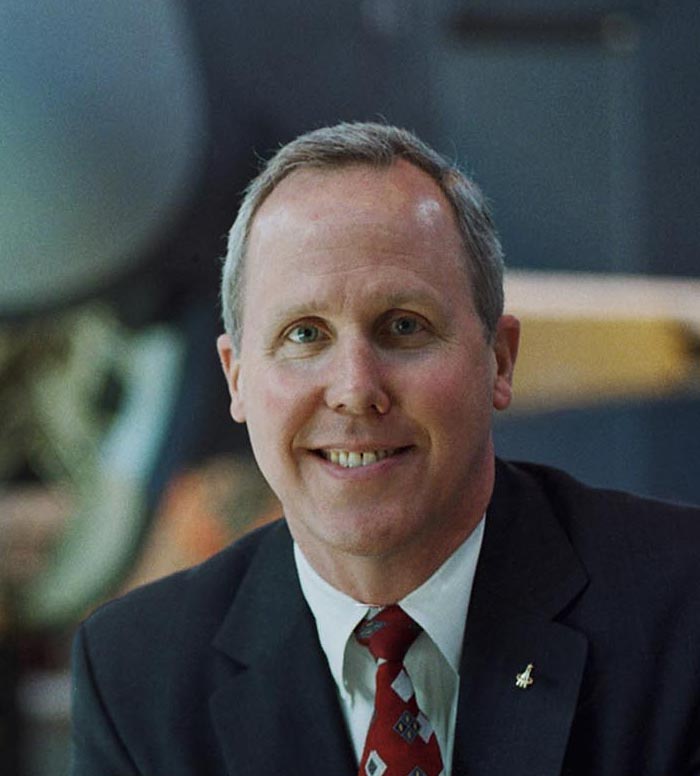Goddard Space Flight Center, Greenbelt, Maryland 20771

ENGINEERING COLLOQUIUM
Monday, September 17, 2012 / 3:30 PM, Building 3 Auditorium
Tom Jones
"Prospecting the Asteroids"
ABSTRACT -- The Near-Earth Asteroids (asteroids whose perihelia are < 1.3 AU) offer scientific and economic benefits to a space-faring society. Exploring a small suite of nearby asteroids would enable us to link knowledge from our meteorite collections to larger parent bodies in the asteroid belt, and thus the formation conditions prevailing 4.6 billion years ago.
Near-Earth asteroids are also attractive human exploration targets, offering scientifically diverse destinations well beyond the Moon, and practical experience in the deep space operational disciplines needed for eventual expeditions to Mars. NASA’s planned Orion spacecraft and Space Launch System initially offer access to cis-lunar space, but an augmented deep space transportation system, based on heritage hardware and Orion/SLS, can enable NEA expeditions by the mid-2020s.
To prepare for these voyages, the U.S. and its partners should launch a robotic, solar-electric propelled spacecraft to capture and retrieve within the decade a small, ~ 7-m asteroid. Launched on an Atlas V for a total mission cost of $2.6 billion, the spacecraft will capture, de-spin, and transport the 500-metric-ton object to Earth-Moon L2. There, astronauts would gain initial experience with exploring an asteroid surface in free fall, and open access to commercial robot prospectors.
Resources from nearby asteroids are the target of new commercial concerns like Planetary Resources, Inc., whose declared goal is to identify, prospect, and extract water and other valuable materials. While most of these raw materials will be processed and used in cis-lunar space, some by-products, like strategic metals, may be lucrative enough to return to Earth. NASA should assist this nascent industry by conducting NEA surveys, characterization observations, sample return, and resource extraction process demonstrations.
SPEAKER -- Thomas D. Jones, PhD is a veteran NASA astronaut, scientist, speaker, author, and consultant. He holds a doctorate in planetary sciences, and in more than eleven years with NASA, flew on four space shuttle missions to Earth orbit. On his last flight, Dr. Jones led three spacewalks to install the centerpiece of the International Space Station, the American Destiny laboratory. He has spent fifty-three days working and living in space.
Born in Baltimore, Tom attended Kenwood High School in Essex, Maryland. He is a Distinguished Graduate of the U.S. Air Force Academy and holds a doctorate in planetary science from the University of Arizona. He piloted B-52D strategic bombers, studied asteroids for NASA, engineered intelligence-gathering systems for the CIA, and helped develop advanced mission concepts to explore the solar system prior to joining NASA’s astronaut corps.
Tom's latest title is Planetology: Unlocking the Secrets of the Solar System (written with Ellen Stofan, PhD; National Geographic, 2008). His other 2008 book, Hell Hawks! (with Robert F. Dorr; Zenith Press), is a true story of an aerial band of brothers in WWII, and the top-selling title at the National Air & Space Museum. The Wall Street Journal named his Sky Walking: An Astronaut's Memoir (Smithsonian-Collins, 2006) as one of its "Five Best" books about space.
Dr. Jones’ awards include the NASA Distinguished Service Medal, four NASA Space Flight Medals, the NASA Outstanding Leadership Medal, the NASA Exceptional Service Award, the NASA Exceptional Public Service Medal, Phi Beta Kappa, and the Air Force Commendation Medal.
Tom served on the NASA Advisory Council and is a board member of the Association of Space Explorers. As a senior research scientist at the Florida Institute for Human and Machine Cognition, he is currently active in asteroid exploration, planetary defense from asteroids, and in the debate over our nation's space exploration policy. His website is www.AstronautTomJones.com
Colloquium Committee Sponsor: Brent Warner
Engineering Colloquium home page: https://ecolloq.gsfc.nasa.gov